Abstract
The increase in dark CO2 fixation during cold storage of Gladiolus x gandavensis van Houtte-type grandiflorus cormels is used to monitor changes in their state of dormancy. Dark fixation is also promoted by benzyladenine, which breaks cormel dormancy, and is inhibited by abscisic acid and gibberellin A3, which inhibit cormel germination. The rate of dark fixation by nondormant cormels is five times higher than that in dormant ones. Dark fixation is not due to microorganisms. It is temperature-dependent and can be measured stoichiometrically in vivo. The apex and base of the cormels accumulate more label than the central part. Dark fixation of both dormant and nondormant cormels is also promoted by imbibition in water. The fate of the labeled assimilates was followed by ion exchange chromatography.
Full text
PDF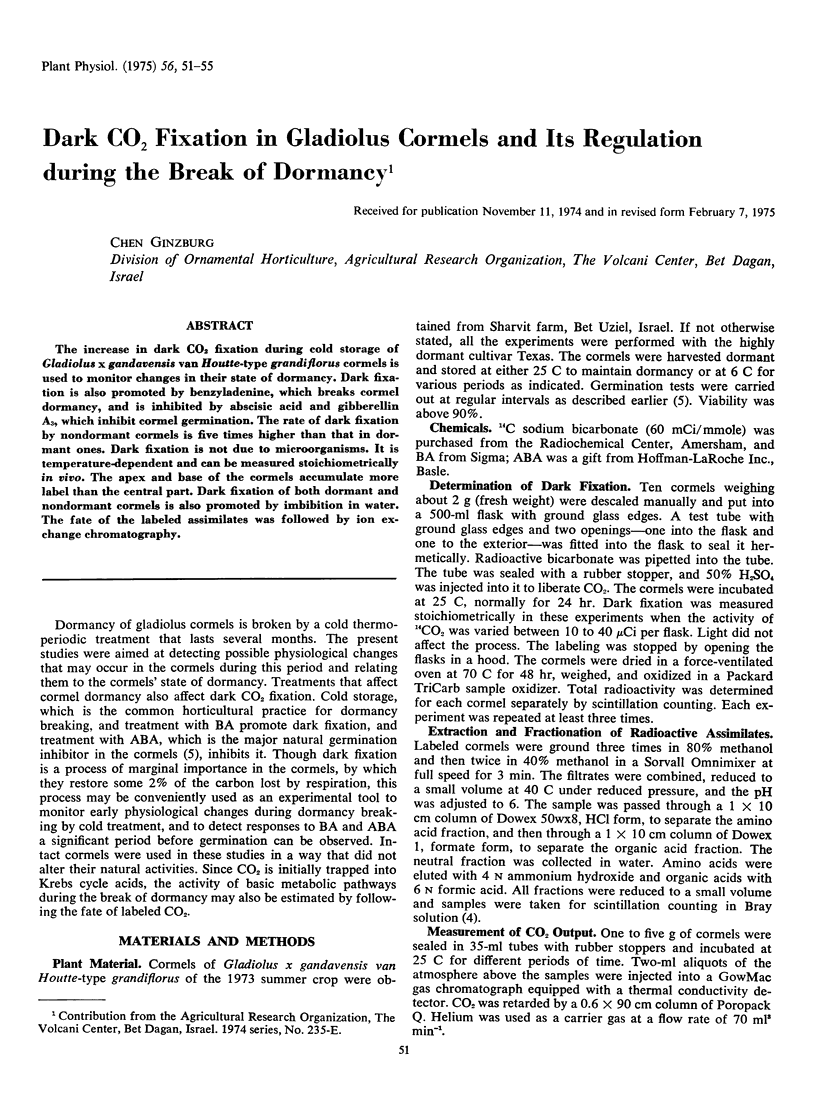
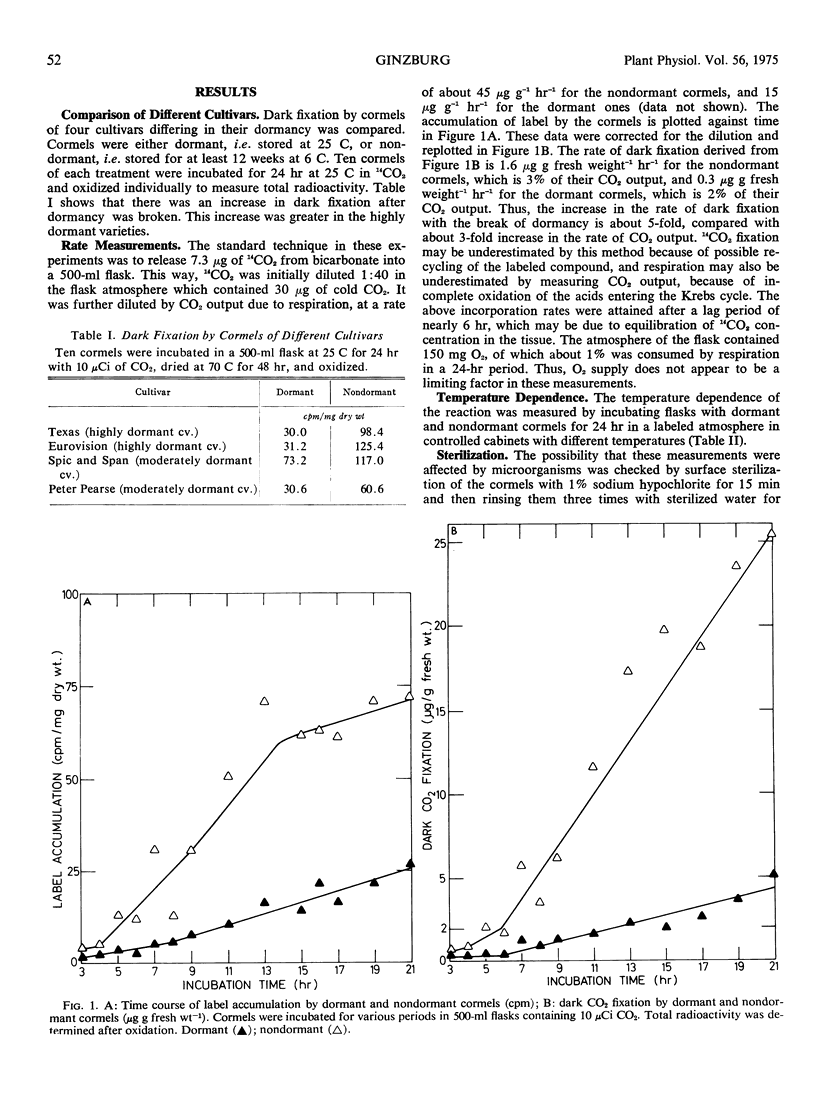
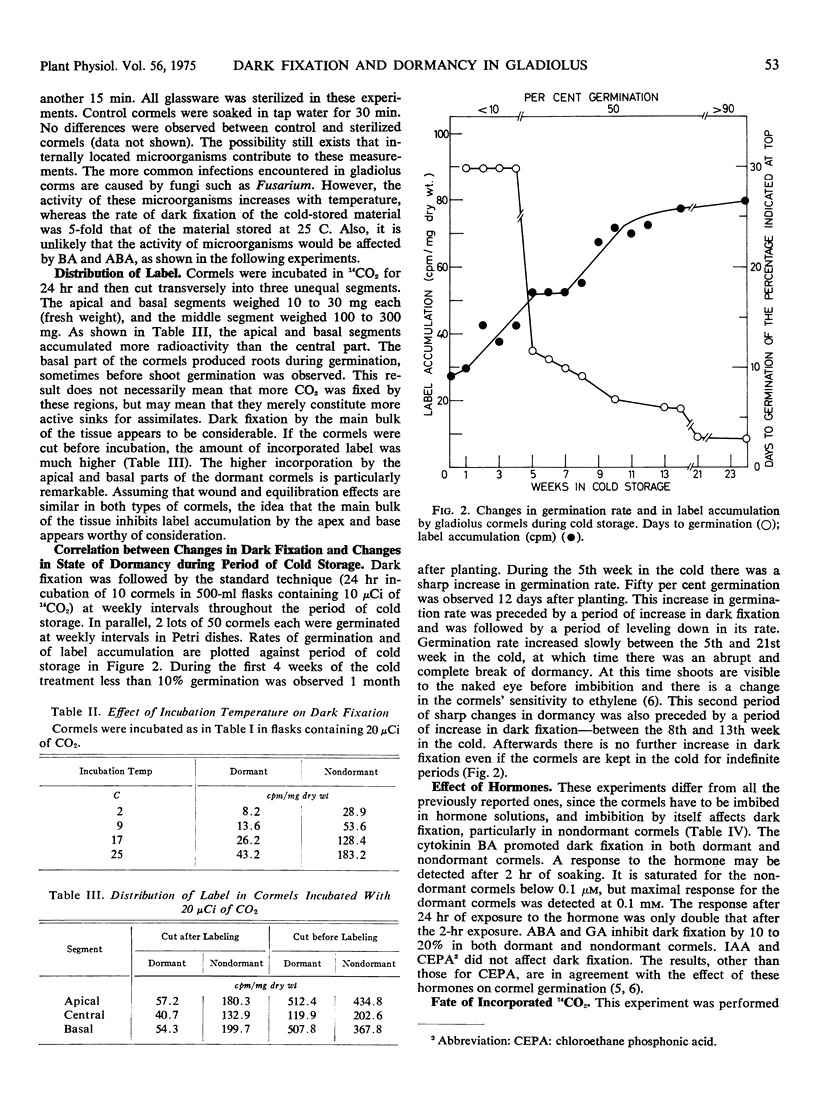
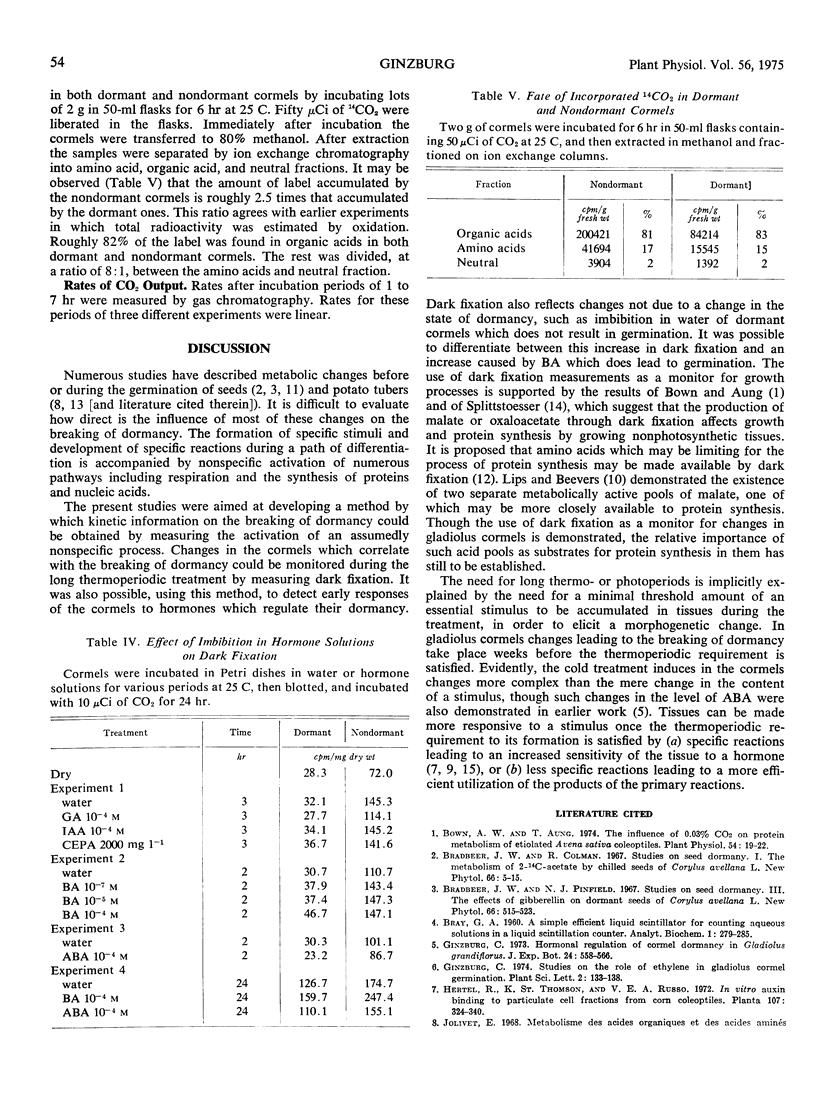
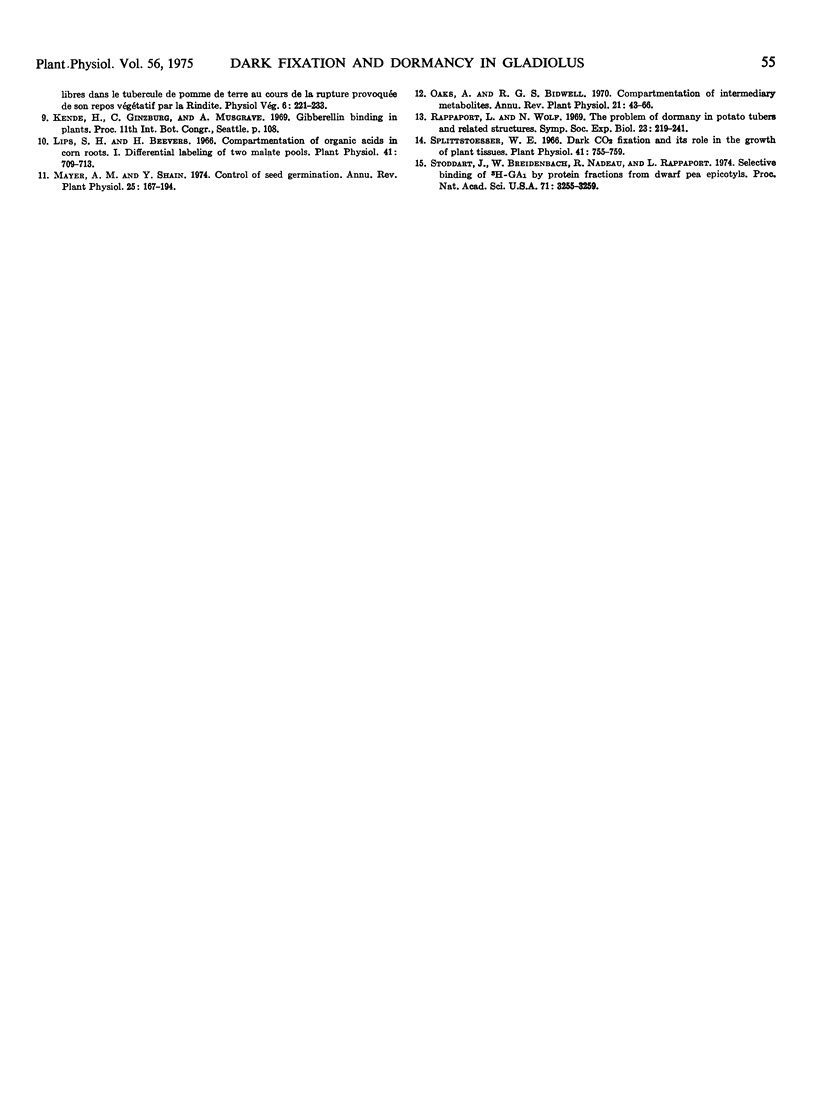
Selected References
These references are in PubMed. This may not be the complete list of references from this article.
- Bown A. W., Aung T. The Influence of 0.03% Carbon Dioxide on Protein Metabolism of Etiolated Avena sativa Coleoptiles. Plant Physiol. 1974 Jul;54(1):19–22. doi: 10.1104/pp.54.1.19. [DOI] [PMC free article] [PubMed] [Google Scholar]
- Lips S. H., Beevers H. Compartmentation of organic acids in corn roots I. Differential labeling of 2 malate pools. Plant Physiol. 1966 Apr;41(4):709–712. doi: 10.1104/pp.41.4.709. [DOI] [PMC free article] [PubMed] [Google Scholar]
- Rappaport L., Wolf N. The problem of dormancy in potato tubers and related structures. Symp Soc Exp Biol. 1969;23:219–240. [PubMed] [Google Scholar]
- Splittstoesser W. E. Dark CO(2) Fixation and its Role in the Growth of Plant Tissue. Plant Physiol. 1966 May;41(5):755–759. doi: 10.1104/pp.41.5.755. [DOI] [PMC free article] [PubMed] [Google Scholar]
- Stoddart J., Breidenbach W., Nadeau R., Rappaport L. Selective binding of (3H)gibberellin A1 by protein fractions from dwarf pea epicotyls. Proc Natl Acad Sci U S A. 1974 Aug;71(8):3255–3259. doi: 10.1073/pnas.71.8.3255. [DOI] [PMC free article] [PubMed] [Google Scholar]


